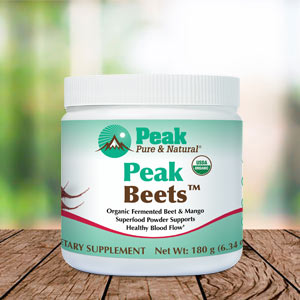Get Easy Health Digest™ in your inbox and don’t miss a thing when you subscribe today. Plus, get the free bonus report, Mother Nature’s Tips, Tricks and Remedies for Cholesterol, Blood Pressure & Blood Sugar as my way of saying welcome to the community!
What we can learn from the man beating Alzheimer’s

This is the true story of a 55-year-old man whose fate seemed to be sealed — until he took action.
When it came to genetics and dementia, Simon Nicholls had drawn the short straw. He carried two copies of the APOE4 gene, one from each parent, which increased his risk of developing Alzheimer’s at least tenfold.
Today, Nicholls’ brain and blood show none of the signs of impending Alzheimer’s.
For now, he’s beaten the odds. Here’s how he did it…
Start with the heart
“I have a 3-year-old son and an 8-year-old son. It’s really important for me, as I get older, to try and be there for them in the future,” Nicholls said.
“There are many [changes] in lifestyle you can do to hopefully push the disease backwards and give yourself more time, which is all we need until we find a cure.”
And Alzheimer’s wasn’t the only risk Nicholls was facing.
He knew that carrying even one APOE4 gene increased his risk of heart disease and vascular dementia, the second most common form of dementia after Alzheimer’s.
“When I was 40, I was told that I had atherosclerosis, with a ridiculously massive coronary artery calcium score of like 1,500 and occlusions in about 96% of my arteries.” A normal coronary artery calcium score is zero.
After trying lifestyle changes and statins, Nicholls underwent surgery that opened three of his arteries with stents.
“It was time to turn to my brain”
As Nicholls’ heart condition began to improve, he was given more bad news.
A brain scan found telltale signs of vascular damage in his brain. Because of his heart condition, the tiniest blood vessels in his brain had been starving for oxygen.
“The doctors said I had too many white matter lesions. I told myself that since I now had my heart more or less under control, it was time to turn to my brain,” Nicholls said.
A blood test that tracks levels of amyloid and tau in the brain returned a score of 70 for Nicholls.
Any score over 58 indicates that amyloid and tau are present.
Under the guidance of Dr. Richard Isaacson, who opened the first clinic for Alzheimer’s prevention in the United States, Nicholls made some drastic changes to his lifestyle in the areas of diet, exercise, stress reduction and sleep.
These included:
- Walking 10,000 steps every day
- Strength training three times a week
- 45-60 minutes per day of jogging or cycling, raising his heart rate 60-70 percent
- A full-body workout with weights three times a week for about an hour at a time
- Avoiding sugar, artificial sweeteners, alcohol and ultra-processed foods
- Following a Mediterranean diet
- Making sure he got enough omega-3s (people with APOE4 need more of these)
- Taking B complex vitamins to control his elevated homocysteine levels (homocysteine is an amino acid, and too much of it is a risk factor for brain atrophy, cognitive impairment and dementia)
- Establishing a sleep schedule that alleviated his insomnia
Are you up to the challenge?
Simon Nicholls worked closely with an acclaimed doctor who performed blood tests to track his progress.
But you don’t need to have a connection like that to do what Simon did.
First, know that there are at-home tests for the APOE4 gene that you can mail in and get a confidential report in just a few weeks.
From there, it’s up to you.
The changes that Simon made are an excellent guideline to follow. Take care of your diet, exercise, sleep, and stress levels.
And don’t try to achieve perfection, either. Research has shown that following these guidelines at least 60 percent of the time can improve your cognitive function, especially in women.
So what are you waiting for? You can control your future health in a big way and possibly even beat Alzheimer’s.
Editor’s note: There are perfectly safe and natural ways to decrease your risk of blood clots including the 25-cent vitamin, the nutrient that acts as a natural blood thinner and the powerful herb that helps clear plaque. To discover these and other secrets of long-lived hearts, click here for Hushed Up Natural Heart Cures and Common Misconceptions of Popular Heart Treatments!
Sources:
Alzheimer’s disease and memory disorders program — Weill Cornell Medicine
Signs of Alzheimer’s were everywhere. Then his brain improved — CNN
Lifestyle changes improved cognition in people at risk for Alzheimers, study shows — CNN














